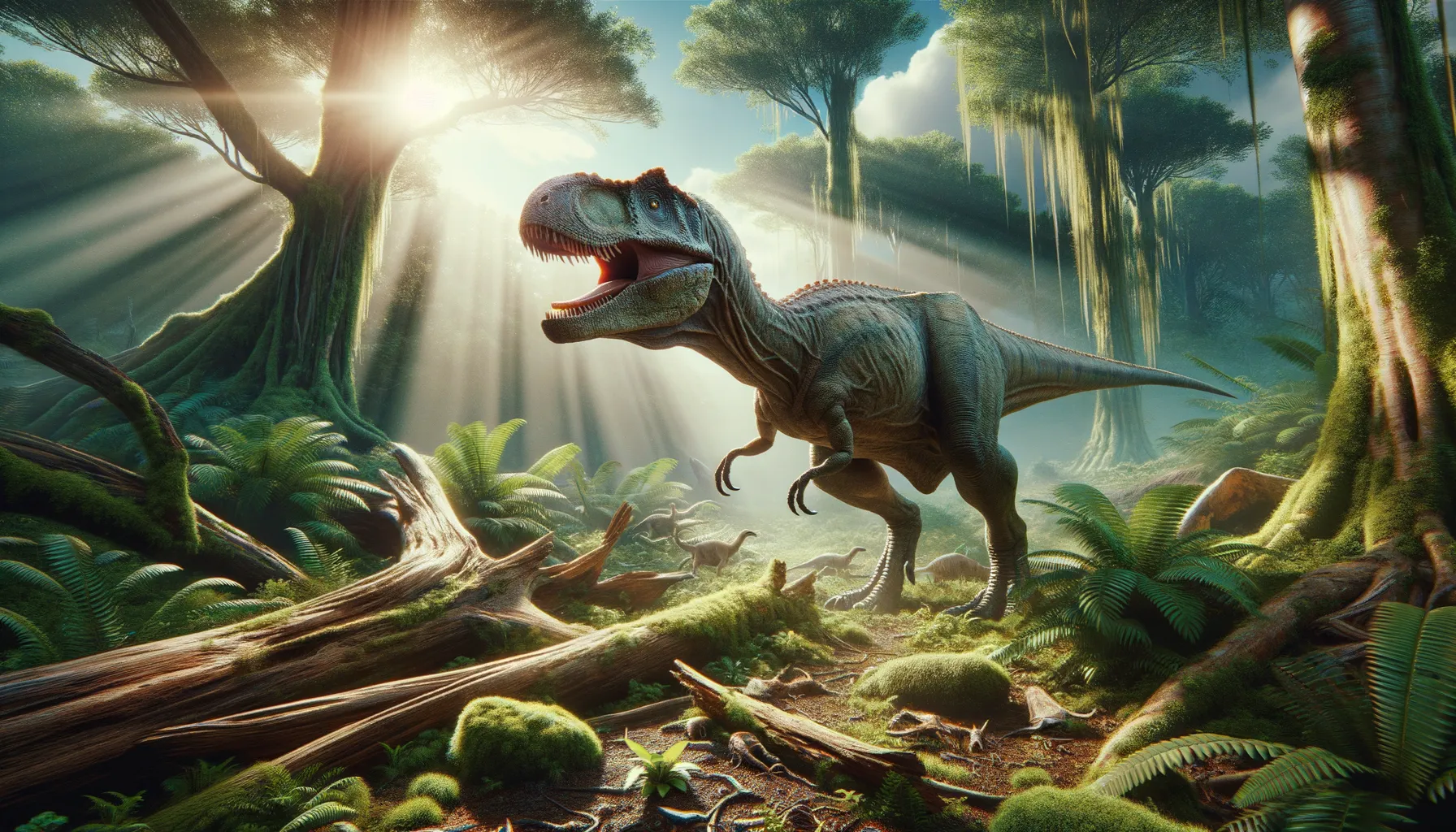
Alnashetri
Speedy survivor of ancient lands.
Period
Cretaceous
Length
Around 1 meter long.
Height
About 0.5 meters tall.
Weight
Roughly 2 to 3 kilograms.
Alnashetri was a small dinosaur that lived during the Cretaceous period. It was discovered in the region that is now Argentina. Bearing characteristics of a fast-moving theropod, Alnashetri is important for understanding the diversity of dinosaurs in South America. Despite its limited size, it played a significant role in the ecosystem of its time, primarily as a predator of small animals and insects.
Diet
Alnashetri was a carnivore, feeding primarily on small vertebrates and insects. Its sharp teeth and agile movements suggest it was effective in capturing prey.
Hunting
Alnashetri likely hunted by stealthily stalking its prey and using quick bursts of speed for the final attack. Its size and agility allowed it to hunt in dense underbrush, giving it an advantage over more cumbersome predators.
Environmental challenges
During the Cretaceous period, Alnashetri faced challenges such as volatile climates and competition for food resources. Fluctuating temperatures and shifting landscapes required adaptability. Periodic volcanic activity and changing sea levels also posed threats to its habitat. Adaptations to these conditions were crucial for its survival.
Speed
Likely moved quickly due to its small size.
Lifespan
Estimated around 10 to 20 years.
First discovery
Discovered in Argentina in 2012.
Fun Facts
- Alnashetri is a relatively small dinosaur, estimated to be around 2 meters long.
- This dinosaur lived during the Late Jurassic period, about 150 million years ago.
- Alnashetri is named after a word in Arabic that means 'to announce' or 'to declare'.
- It was discovered in the Los Colorados Formation in Argentina, a place known for many dinosaur findings.
- Alnashetri is part of the Alvarezsauridae family, which is known for having small, bird-like dinosaurs.
- The discovery of Alnashetri has helped scientists understand the diversity and evolution of Alvarezsaurids.
- Despite its small size, Alnashetri was likely a quick and agile runner, making it quite efficient at catching prey or avoiding predators.
Growth and Development
Alnashetri grew from hatching to adult relatively quickly, a necessity in the rapidly changing Cretaceous environment. Early growth stages focused on speed and agility, crucial for evading predators and hunting. It likely reached full size within a few years, ensuring it could contribute to its ecosystem's dynamics.
Habitat
Alnashetri lived in what is now Argentina, a region that was diverse in flora and fauna during the Cretaceous. Its habitat likely included forests and open plains with ample vegetation. These environments provided both cover for hunting and opportunities for finding prey.
Interaction with other species
Alnashetri interacted with various other species, including larger predatory dinosaurs and potential prey. As a small carnivore, it occupied a specific ecological niche, balancing the roles of predator and prey. Its interactions were vital in maintaining ecological balance in its environment.
Natural lifespan
Alnashetri naturally lived for about 10 to 20 years in the wild.
Reproduction
Alnashetri likely reproduced by laying eggs, similar to other theropods. Nesting habits remain speculative, but it might have used vegetation or soil mounds for nest sites. Parental care is unknown, though some level of nest protection is possible.
Social behaviour
Alnashetri might have been solitary or lived in small groups, depending on food availability. Social behavior could have involved basic communication for hunting or mating purposes. Observations of related species suggest these patterns.
Fossil locations
Its fossils were found in the La Buitrera region of Argentina. These locations help in understanding its distribution and environmental adaptations. The findings highlight the region's significance in studying South American dinosaurs.
